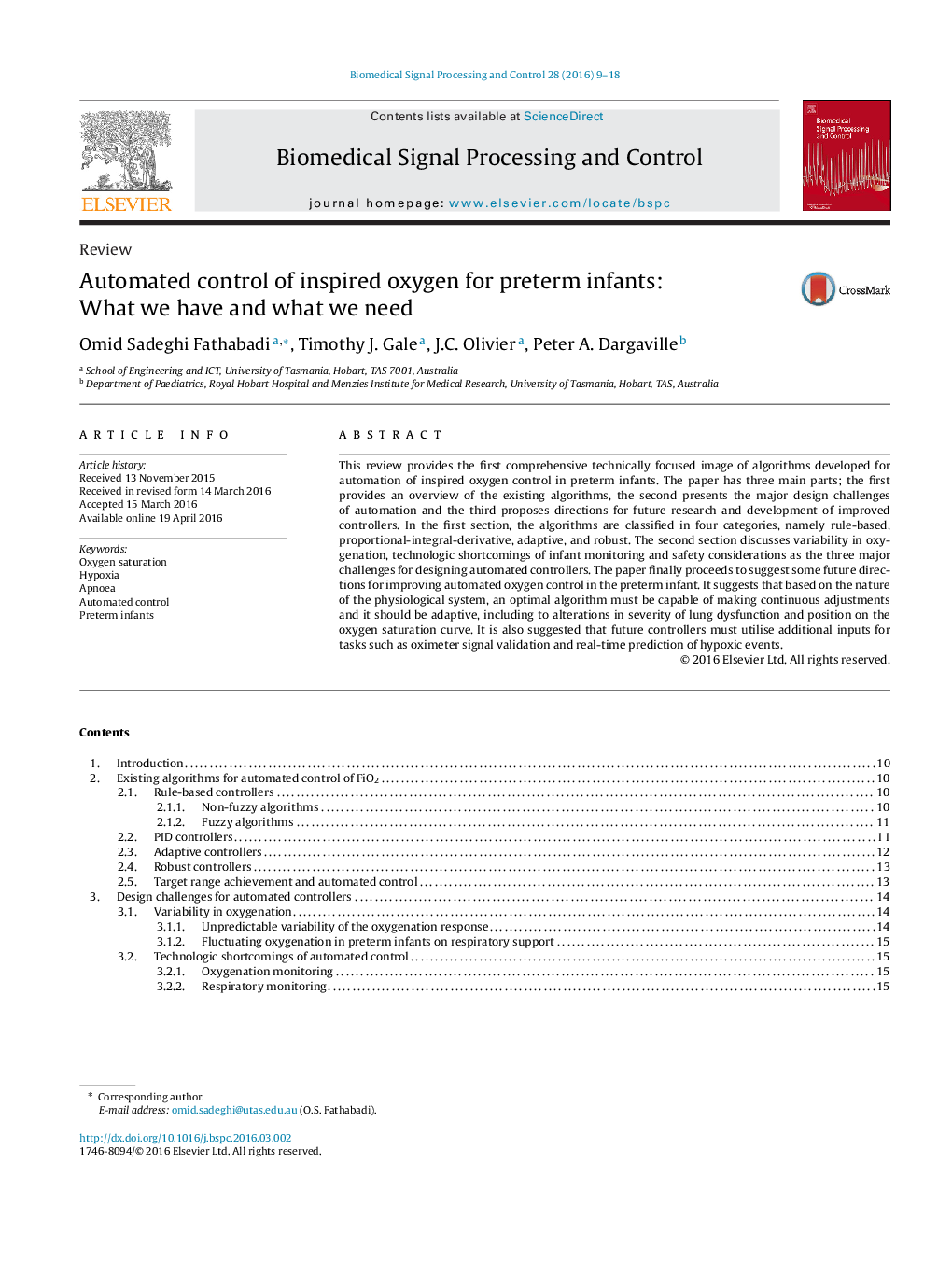| Article ID | Journal | Published Year | Pages | File Type |
|---|---|---|---|---|
| 558706 | Biomedical Signal Processing and Control | 2016 | 10 Pages |
•Rapidly responsive adaptive FiO2 controllers may be advantageous in preterm infants.•Predicting SpO2 variability and hypoxia in infants may enhance FiO2 control.•Current controllers are limited by technologic shortcomings of infant monitoring.•Embedded safety considerations are crucial in developing automated controllers.•Further clinical research will be needed to improve automated oxygen controllers.
This review provides the first comprehensive technically focused image of algorithms developed for automation of inspired oxygen control in preterm infants. The paper has three main parts; the first provides an overview of the existing algorithms, the second presents the major design challenges of automation and the third proposes directions for future research and development of improved controllers. In the first section, the algorithms are classified in four categories, namely rule-based, proportional-integral-derivative, adaptive, and robust. The second section discusses variability in oxygenation, technologic shortcomings of infant monitoring and safety considerations as the three major challenges for designing automated controllers. The paper finally proceeds to suggest some future directions for improving automated oxygen control in the preterm infant. It suggests that based on the nature of the physiological system, an optimal algorithm must be capable of making continuous adjustments and it should be adaptive, including to alterations in severity of lung dysfunction and position on the oxygen saturation curve. It is also suggested that future controllers must utilise additional inputs for tasks such as oximeter signal validation and real-time prediction of hypoxic events.
